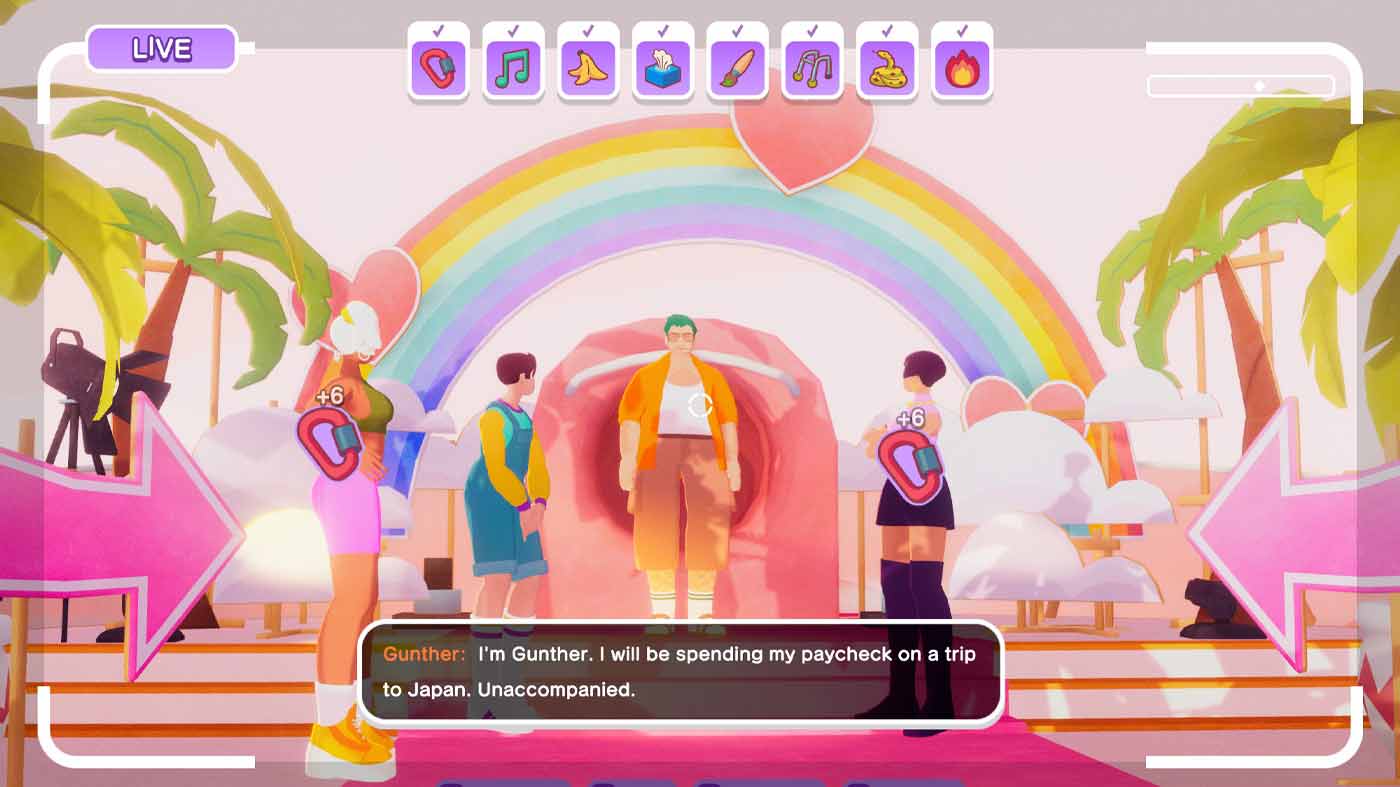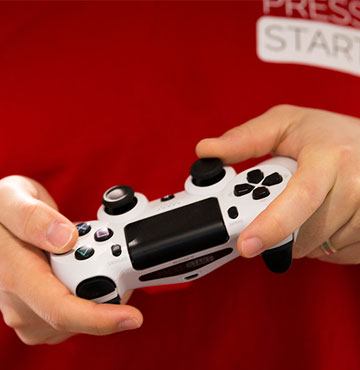At a trivia night a few years ago, I shocked my teammates by correctly naming the winner of the first season of Big Brother Australia, which aired in 2001 (Ben Williams). The name stuck with me in part because I have a cousin with the same name, but also because I was really pulled in on those first few seasons of Big Brother. I watched diligently every weeknight. I tuned in for evictions, even convincing my mum to let me spend a few dollars on voting for the season winner. I’d sneakily watch the uncut Up Late version in my room, and sometimes the even later live stream, which was often just the housemates sleeping.
The Crush House, from Reigns and Card Shark developer Nerial, tapped right into those memories – and they really are memories rather than nostalgia, because the whole “knowing every little detail of a handful of people’s very public lives” part of the show never really went away. The Crush House is the hottest reality show of 1999, and you are the show’s sole camera operator, charged with catering to audience interest every day until, at the end of the week, you and the contestants are fed into a mysterious slide so that the whole process can begin again with a new cast.

It’s important, going in, that you not know too much about the “mysterious slide”, suffice it to say that there’s much more going on below the surface of The Crush House, both literally and figuratively. The metanarrative – which is foreshadowed enough that mentioning it is not a spoiler – is canny in its satire, but even if you bounced off it entirely, The Crush House would still be an interesting game. The moment-by-moment focus is very much on being the best cameraperson you can be, making great television and getting caught up in the house’s drama in the process.
The housemates, who speak in an Animal Crossing-style gibberish that is subtitled into dialogue, are all distinct characters, and they all feel like they would have fit right into a late 90s reality show (albeit one with more progressive queer politics than most late 90s TV – you’ll be filming a lot of same-sex smooches). There are twelve potential residents, and for every five episode “season” you can pick a new combination of four of them. You’ve got your nerds, your jocks, your heartbreakers and hippies and contrarian shitheads, and it’s up to you to pick different combinations to see who clicks, who doesn’t, and which couples have enemies-to-lovers potential. The character dialogue is extremely fun throughout, and even if you’ll see quite a few repeated lines, each housemate feels distinctive and well-drawn.

Each day, you’ll be given a list of audiences who need to be appeased, with their requests popping up along the side of the screen as though they’re comments on a live feed. You’ll need to appeal to most or all of your audiences if you want to avoid cancellation at the end of the episode, which means aligning your shooting with what they want to see. Some of these audiences want very specific items to show up in the shot. They might love fish, or plants, or lighthouses. Pervier audiences might be into butts, or feet, or bikini bodies, so some days you’ll need to be a bit sleazier. Some audiences are more abstract in their desires. The elderly like to see people sitting down and being nice to each other, the film studies students love a dutch angle, and conspiracy theorists will read into certain background details of your shots and grow excited.
Playing the game means serving as director, producer, and camera person all in one. “Ayo and Emilie are fighting in their bathing suits near the pool! Run over and capture it! Bea is doing weights upstairs – the divorced dads in the audience will love it! Try to frame that potted plant behind Priscilla and Gunther while they’re making out!” It’s not a perfect system, though. Some audiences will reduce the quality of what you’re filming. If fish fans tune in, you might spend most of your day in the room with the fish tank, for instance. There are some audiences I never figured out, or tended to only appeal to purely by accident, and it can be difficult to determine why certain audiences are or aren’t being pleased by what you’re capturing.

On regular difficulty, missing your target results in a game over, forcing you to restart the current day until you get it right. The audiences will reset each time too, which can save you if you’ve encountered one of the most unfortunate quirks of the game’s design – it’s possible to get an audience split that is all but impossible to please with the selection of housemates you’ve picked for that season. Some audiences naturally synthesise around particular footage, but there were some days where I struggled to please anyone, let alone everyone.
The housemates will eventually start breaking the show’s “no communication between cast and crew” rule to make requests of you, and it soon becomes clear that completing these quests is the only way to progress the story. These tasks always involve capturing certain footage, and range from straightforward to quite intensive. Fitting them in around appeasing audiences can be a fun challenge, and they add an extra layer of tension to proceedings as you try to juggle everything.These tasks can break up the repetitive nature of the game, which I was thankful for: I spent many days capturing very similar footage, or running back and forth between a few areas to keep recapturing whatever objects the audience most wanted to see that day.

The Crush House works because it’s satirising reality television without insulting it. There’s a core understanding here of how these shows are often very good television. It’s genuinely fun and interesting when two characters change their relationship dramatically over the five day season, and finding ways to line up shots that will please multiple audiences at once feels very satisfying. I can imagine watching The Crush House and finding it to be a fun guilty pleasure. But at the same time, the game’s narrative speaks to what it means to constantly be inundated with new celebrities, ones whose fifteen minutes of fame actually end after fifteen minutes.
The Crush House isn’t the deepest satire, but it’s certainly clever. I’ve played games where you operate a camera before, but nothing quite like this – the actual entertainment value of the cast and the game’s good writing butts up against the ways you’re forced to make the show actively worse to please certain fans in a way that is pretty interesting and clever.

To generate money to unlock new items around the house, which can prompt new interactions and please certain audiences or cast members, you need to run ads. Switching the camera off automatically starts an ad roll; that might sound a bit dull, but the ads are one of my favourite parts of the game. Most of them are fun references to other beloved indie games. Without ruining the fun of discovery for anyone, the Immortality ad (for Maria’s Two of Everything soundtrack on cassette) is particularly great. Money accumulates quite slowly, but there’s a good sense of progression as you purchase new objects for your cast to admire and use.
The Crush House might be a tad on the repetitive side, and occasionally a little unfair, but I found it just as compelling as those first few seasons of Big Brother. The allure of uncovering the house’s dark secrets is a strong pull, but when the credits rolled I found myself a little sad that there would not be a season 6 of The Crush House unless I started the game over again and did a little worse this time.




